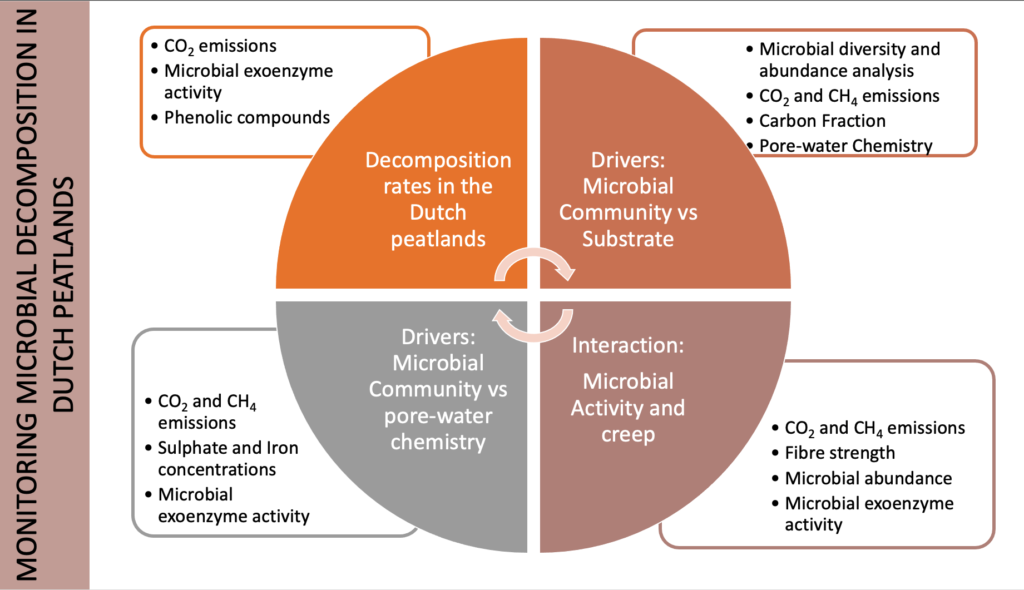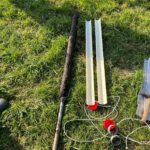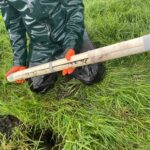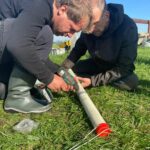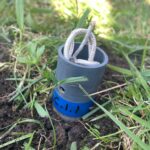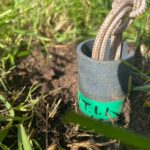WP2.1 – The Role of Microbial Decomposition in Peat Subsidence
Overview
Peatlands occupy approximately 7% of Dutch land which have been intensively used for agriculture and mining since 13th century. This led to substantial amount of peat loss and shift their carbon accumulator’s role to carbon emitters. Currently, peat loss and concomitant land subsidence threatens the ecosystem services of peatlands and the economy of the country (e.g., infrastructure damage, flood risk and salinization of groundwater) which requires an urgent, feasible and sustainable solutions. Peat loss results in land subsidence due to the known processes shrinkage, creep, consolidation and aerobic decomposition. The rates of these processes depend on groundwater level in the polders. Groundwater level determines the oxygen intrusion into the peat and thickness of the anoxic zone. Previous studies mostly focused on aerobic peat decomposition due to its relatively large contribution to land subsidence and greenhouse gas emissions. Nevertheless, some studies showed that microbial and physical processes that take place under anoxic conditions can also significantly contribute to land subsidence. Organic matter (OM) decomposition under anoxic environment might be slow and negligible for the emissions of greenhouse gasses but key for understanding land subsidence. Furthermore, interactions between physical land subsidence processes and OM decay have been neglected and might alter land subsidence predictions. Therefore, a deeper mechanistic understanding of land subsidence under oxic and anoxic conditions is necessary to have reliable subsidence models for future challenges.
My research focus in the LOSS project is to inspect the role of microbial decomposition in peat subsidence and its relationship with other subsidence processes (primary consolidation and creep). I will investigate the range of oxic and anoxic decomposition rates from Dutch peatlands and reveal several drivers that control the decomposition rates. Also, I will collect evidences for the interaction of biological and physical land subsidence mechanisms.
This sub-project is carried out by Duygu Tolunay (UU-BIO), and supervised by Mariet Hefting, Gilles Erkens and George Kowalchuk.
Research Questions
RQ.1 What are the oxic and anoxic decomposition rates in botanically different peatlands in the Netherlands?
Aim: Investigate the range of microbial decomposition rates from botanically different peatlands in the Netherlands
Peat samples from the permanently water saturated zone were collected. Four sampling sites from the Netherlands were chosen based on the dominant plant material in the peat matrix. Sub-samples were incubated for four months in the laboratory under both oxic and anoxic conditions. Microbial decomposition rate was monitored by measuring the CO2 emissions and microbial enzyme activity.
Results show that carbon dioxide emissions from anoxic peat layers are substantial, and given the depth of these peat layers, such activities may play an important role in the long-term land subsidence and greenhouse gas emissions from Dutch peatlands. Further studies should check the methane emissions from water-saturated layers together with the diffusion rate of these gasses to the atmosphere relative to depth.
We also found that different types of peat exhibit a range of vulnerability to microbial degradation potential influencing the effects of summer droughts and drainage events. Based on our results, the nature of the peat matrix appears to play a role in determining oxic and anoxic decomposition rates but given the range of factors that can influence decomposition more study sites with botanically different peat types are needed in the future.
RQ.2 How does substrate legacy impact the microbial activity, diversity, and abundance in Dutch peatlands when environmental conditions are changed?
Aim: To understand how decomposition state (highly decomposed and fresh) of peat substrate influence the microbial activity in Dutch peatlands when environmental conditions change
One-meter cores (from the depth 25 cm until 125 cm) were collected from three field sites. The cores were placed in a drainage tube, flipped and placed back to the field. This way, peat layers which are exposed to long term oxygen will be placed under anoxic, water-saturated field conditions. Anoxic, water-saturated peat layers will be drained by placing them at the oxic field conditions. The duration of the experiment is for two years and every year there will be sampling to monitor the changes.
RQ.3 What is the effect of sulphur and iron presence on oxic and anoxic microbial activitiy?
The experiment is being designed for the year 2023. Preliminary data on the iron presence was collected.
RQ.4 How does increase in the duration of vertical stress alter the microbial decomposition from Dutch peatlands?
The experiment is being designed for the year 2023. In this experiment will be conducted together with the WP 2.2
Output of the project
• The range of oxic and anoxic decomposition rates from Dutch peatlands
• Anoxic decomposition rates for land subsidence models
• The substrate legacy effect for peatland water management strategies in the Netherlands
• The effects of iron and sulphate presence on the decomposition rates
• The first evidences for the effects of compaction on microbial decomposition
Output formats
✓ PhD thesis
✓ Academic articles
✓ Progress Poster presentations
✓ Academic oral and poster presentations
✓ Facts sheets for the important results of the research
✓ Articles for Young minds (Frontiers)
✓ Comic book for young teens (12-14)
For more questions and learning more about the progress of the project, contact Duygu Tolunay:
Email: d.tolunay@uu.nl
LinkedIn: https://www.linkedin.com/in/duygu-tolunay-5b511759/
Twitter: https://twitter.com/Duygu_Tolunay


